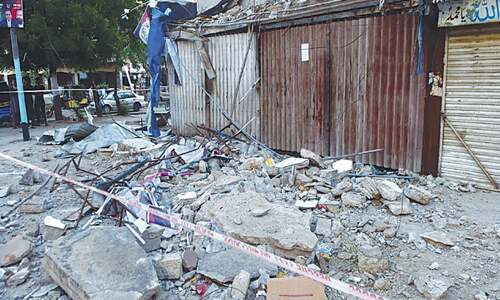
WHAT is a glossary? A glossary is “a type of reference work which lists a selection of words or phrases, or terms in a specialised field, usually in alphabetical order, together with minimal definitions or translation equivalents“, wrote R.R.K. Hartmann and Gregory James in their unique work Dictionary of Lexicography.
A glossary is called ‘farhang’ in Urdu, though ‘farhang’ means ‘dictionary’ in Persian. For ‘dictionary’, the Arabic word ‘lughat’ is used in Urdu. Among the glossaries popular in Urdu is Farhang-i-Aamira. Being a glossary of Arabic, Persian and Turkish words used in Urdu, it was always going to be popular as the vocabularies of these languages abound in Urdu and they sometimes pose some difficulties for those who are not well-versed in these languages.
Compiled by Muhammad Abdullah Khan Kheshgi, the first edition of Farhang-i-Aamira had appeared in 1937. Now Vasiullah Khokhar has compiled a new edition. Published by Lahore’s Mushtaq Book Corner, this new edition has been composed afresh on Urdu software. The first edition gave syllable-based pronunciation of each and every entry, making it not only more useful but also Urdu’s first lexicographic work to have mentioned pronunciation on a syllable-based system. Additionally, diacritic marks have also been put invariably on each syllable.
Vasiullah Khokhar is a young lexicographer based in Kamoke, district of Gujranwala, Punjab, and has to his credit a couple of Urdu-Urdu and Urdu-English dictionaries. He has penned a detailed foreword to this new edition. In this foreword, aside from recording a brief history of lexicography in Urdu, he has traced all the previous editions of Farhang-i-Aamira and has described their features.
Khokhar says four editions of Farhang-i-Aamira have been published so far. The first edition had appeared in 1937 and an appendix was added to the second, published in 1946. This appendix consisted of about 3,000 words dubbed as ‘Hindi’. In the latter editions, this appendix was axed and this new, fifth edition too does not have this section. The third edition, just as the previous ones, appeared from Khurja, UP, India. But the fourth edition was published from Karachi in 1957, as the compiler Abdullah Khan Kheshgi had migrated to Pakistan.
The fourth edition was updated and revised by Abdullah Kheshgi and he had not only added entries but had also amended many old ones. A list of writers and poets of Urdu, along with their years of birth and death, was added to the fourth edition. This new, fifth edition is based on the very same fourth edition and does have the list, which was missing in the edition published by National Language Authority (NLA) in 1989. The NLA edition was reproduced in India, too. Recently, another edition of Farhang-i-Aamira appeared from Lahore, but a large number of entries are missing mysteriously and the list of poets and writers too has been reduced and edited without ever mentioning the changes or the reasons for them. This edition published by Mushtaq Book Corner, Lahore, is authentic and has been meticulously compiled. It is also annotated by Khokhar Sahib wherever necessary, giving the readers a different perspective.
Khokhar says that Farhang-i-Aamira has some unique features. For instance, it was the first Urdu dictionary to show pronunciation in the segments based on syllables. Secondly, it provides the reader with sufficient synonyms. Another feature is the inclusion of words that can be classified as homophones (words having the same pronunciation but different spellings or meanings) and homographs (words having the same spellings but pronounced differently). Farhang-i-Aamira also gives, with a large number of entries, the plurals of Arabic words and the infinitives of Persian words. Though it includes some words that are rarely, if ever, used in Urdu, it is a useful glossary for those who are interested in knowing Persian, Arabic and Turkish words borrowed by Urdu.
But not much is known about Muhammad Abdullah Khan Kheshgi, the compiler of Farhang-i-Aamira. Muhammad Muneer Sletch, the scholar known for his authoritative obituaries, says that Kheshgi was born in Khurja (UP) on Aug 10, 1897 and died on Oct 2, 1960 in Karachi. But Vasiullah Khokhar has quoted the list included at the back of Farhang-i-Aamira wherein Kheshgi himself has mentioned his year of birth as 1900. Also, Khokhar says, on the authority of Muhammad Ahsan Khan, that Kheshgi was alive even after 1960 as Ahsan Khan had met him in Karachi in 1970.
Abdullah Kheshgi had also published Bostaan-i-Qalam, a collection of letters, and Maqalaat-i-Sir Syed, a compilation.
Published in Dawn, March 3rd, 2020














































Dear visitor, the comments section is undergoing an overhaul and will return soon.